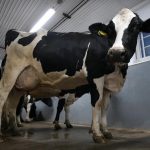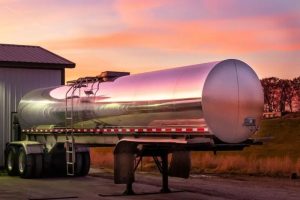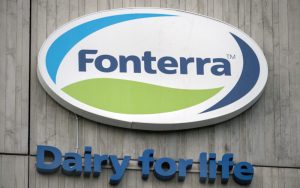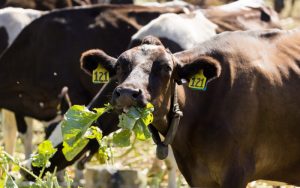
Reproduction improvements could create $130.7m in extra milk revenue.
New Zealand dairy farmers have achieved the highest six-week in-calf rate and lowest not-in-calf rate on record, according to data from LIC and DairyNZ.
The average six-week in-calf rate is sitting at 69.3% for the 2023-24 season, up 2.7% from last season (66.6%), and the not-in-calf rate is down to 15% from 16.7%.
The conception rate – the proportion of inseminations that resulted in pregnancy – was up from 50.9% to 53.1%.
The interim data, based on aged pregnancy test results from 4679 herds with a detailed DairyNZ fertility focus report in LIC’s MINDA software, represents 2.5 million cows from across New Zealand.
On a national scale, the DairyNZ InCalf calculator estimates these reproduction improvements could create $130.7 million in extra milk revenue.
DairyNZ senior scientist Chris Burke said improved reproduction performance could also help farmers lower emissions.
“Herd reproductive performance is key in ensuring dairy farming success and in lowering methane emissions by reducing the number of non-productive cows.
“These results highlight the ongoing sector-wide opportunities to help farmers improve animal efficiency, to continue working towards emissions reduction goals.”
Burke said the challenge for dairy farmers is to maintain this good performance.
“To lock in these gains, farmers should focus on hitting condition score targets at calving and on planning their spring feeding carefully.”
LIC senior reproduction solutions adviser Jair Mandriaza said it is great news for the dairy sector after a couple of tough seasons.
Submission rates (the number of cows that were mated in the first three weeks) also increased compared to last season from 79.3-80.8%
“It seems many farmers have implemented improved management practices to overcome those tough seasons and, coupled with favourable weather in many parts of the country, are now reaping the rewards of their hard work.”
Mandriaza said the improvement in rates was not down to just one factor and there was little difference in body condition score compared to the previous season.
“What I think has come through is that farmers in the last couple of seasons have had it pretty tough and we have had some pretty challenging times, and I think farmers have created some good management strategies. All of these changes are coming to fruition.”
That, combined with the high level of feed availability, meant the cows were in peak condition for mating.
The results included sexed semen mating and the semen quality issues LIC had in October last year.
Fonterra’s group director for farm source, Anne Douglas, said the results are particularly encouraging.
“Animal efficiency can improve farm profitability as well as positively impact a farm’s emissions intensity profile, which is important for our co-op.
“We provide a number of tools and services aimed at supporting farmers, including our tailored Farm Insights Reports, and we also really appreciate the work that LIC and DairyNZ are doing in this space. By working collectively alongside Kiwi farmers we can help them continue to lead the way in sustainable, efficient dairy farming.”
You can now read the most important #news on #eDairyNews #Whatsapp channels!!!
🇺🇸 eDairy News INGLÊS: https://whatsapp.com/channel/0029VaKsjzGDTkJyIN6hcP1K

























